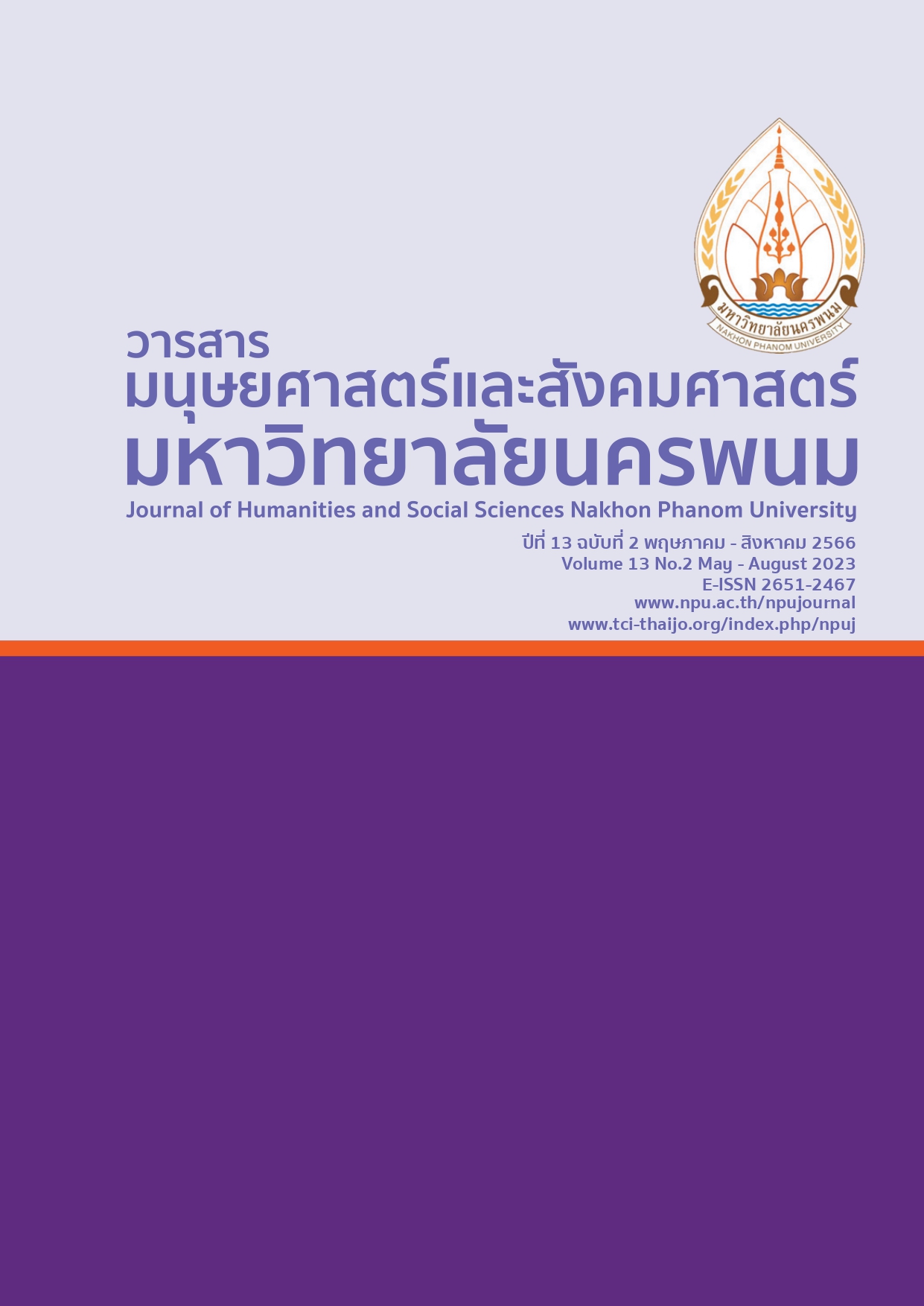Asymmetry of Exchange Rate Pass-through to Consumer Price Index: A Case Study of Thailand
Main Article Content
Abstract
The objective of this study was to determine whether the relationship between exchange rate pass-through (ERPT) and consumer price index (CPI) was symmetrical. In this study, the real exchange rate index was used to represent the exchange rate, and the independent variables used in this study consisted of the output gap, money supply, and oil and gold prices. The data used in the study were monthly data from 2000 to 2021. Non-Linear Autoregressive Distributed Lag Model (NARDL) method is employed for the estimation. The results demonstrated that the exchange rate pass-through CPI over the long-run was asymmetrical (long-run asymmetry) and it was the incomplete pass-through significantly at the .01 level, and indicated that the change of product price was incomplete adjustment or price stickiness. In addition, it was found that the oil price was the factor that significantly affected the changing of consumer price index in the long term at the .01 level, so when oil prices changes, it cause the changing of the consumer price index likewise. Therefore, the affiliation can use the results as a guideline for planning about price index changing.
Article Details

This work is licensed under a Creative Commons Attribution-NonCommercial-NoDerivatives 4.0 International License.
References
Aisen, A., Simione, F. and Manguinhane, E. (2021), An Empirical Assessment of the Exchange Rate Pass-Through in Mozambique. IMF Working Paper, No.2021/132. Retrieved January 2023, from https:// ssrn. com/abstract=4026308
Bahmani-Oskooee, M. and Mohammadian, A. (2018). Asymmetry Effects of Exchange Rate Changes on Domestic Production in Emerging Countries. Emerging Markets Finance and Trade. 54(6),1442-1459. https://doi.org/10.1080/1540496x.2017.1307730
Ho, S.H. and Hafrad, I. (2020). Asymmetric exchange rates pass-through: New evidence from Vietnam. MPRA Paper. 98651. Germany : University Library of Munich.
Kassi, D.F., Rathnayake, D.N., Edjoukou, A.J.R., Gnangoin, Y.T., Louembe, P.A., Ding, N. and Sun, G. (2019a). Asymmetry in exchange rate pass-through to consumer prices: new perspective from Sub-Saharan African countries. Economies. 7(1),5. https://doi.org/10.3390/economies7010005
Kassi, D. F., Sun, G., Ding, N., Rathnayake, D. N. and Assamoi, G. R. (2019b). Asymmetry in exchange rate pass-through to consumer prices: Evidence from emerging and developing Asian countries. Economic Analysis and Policy. 62,357-372. https://doi.org/10.1016/j.eap.2018.09.013
Shin, Y., Yu, B. and Greenwood-Nimmo, M. (2014). Modelling Asymmetric Cointegration and Dynamic Multipliers in a Nonlinear ARDL Framework. Festschrift in Honor of Peter Schmidt. New York : Springer. https://doi.org/10.1007/978-1-4899-8008-3_9
Simonyan, S. (2020). Asymmetric exchange rate pass-through to import and export prices for Turkey: A nonlinear autoregressive distributed lag (NARDL) approach. Asian Academy of Management Journal of Accounting and Finance. 16(1),35-44. doi:10.21315/aamjaf2020.16.1.2
Termprasertsakul, S. (2018). Exchange rate pass-through to domestic price indices in Thailand. Economics and Public. Policy Journal. 9(17),53-66.


